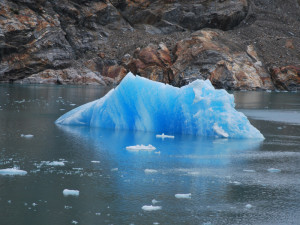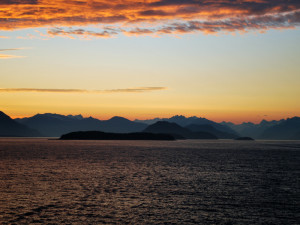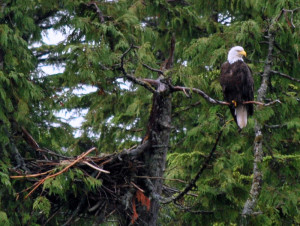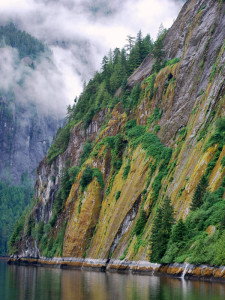Yes, I know it’s getting cold and snowy in many parts of the country, and Alaska may seem an odd choice when contemplating future travels during the post-holiday doldrums, especially when it’s sleeting outside.
But it’s not too early to begin planning your summertime Alaska vacation, which for most people involves a cruise and perhaps a land tour before or after the shipboard experience.
Generally speaking, to be assured of securing space on the ship you want and the type of cabin you prefer, it’s wise to book an Alaska cruise in January or February (especially if you require family-sized cabins in mid-summer, popular with multi-generational groups).
Last-minute discounts that are often available for other cruise destinations are harder to come by in Alaska. The reason is that high demand, combined with a short season — May through mid-September — means cabins often fill up fast.
The same factors mean that Alaska cruises are traditionally priced higher than, say, cruises to the Caribbean or Mexico. But you’re likely to get a better deal now than if you wait.
Why Alaska?
Alaska — the site of my first mainstream cruise back in 1989 — has remained one of my favorite cruise destinations. The powerful allure of the 49th U.S. state never seems to fade, no matter how many times you return.
Alaska’s combination of scenic splendor, raw nature, native cultures, Gold Rush history, and extraordinary wildlife continues to seduce even the most jaded travelers — making it no surprise that Alaska has exploded in popularity as a cruise destination over the past two or three decades.
Where else can Americans cruise through such an “exotic” wilderness — without having to leave North America? Most departures are from Seattle or Vancouver, B.C. (a few are from California), so Americans don’t have to cross an ocean to get there.
Alaska cruises also make sense for other practical reasons. Most ship itineraries are one week — long enough to really get away from it all but short enough to sustain everyone’s interest throughout.
And because of its far-north weather, Alaska cruising season neatly coincides with summer vacation time, when Alaskan temperatures average from the 50s up to the mid-70s. That’s good for multi-generational groups: often baby boomers traveling with their grandchildren or perhaps three generations including their children and grandchildren.
A Multi-Generational Alaska Cruise
That was the case during my 1990 cruise through Alaska’s Inside Passage. It was my parents’ 50th wedding anniversary, and — since they had already traveled to 49 other U.S. states and Alaska would be their 50th state — it seemed appropriate.
And with seven of us — including my then-70-something parents, my sister, my wife, and our two then-preteen kids — set to make the trip, we chose the one mode of transport guaranteed to please three generations: a cruise.
It worked out beautifully. As we sailed north on a seven-night Royal Caribbean ship out of Vancouver, each generation was able to pursue its own interests onboard.
My parents seemed determined to partake in every shipboard activity geared toward anyone over school age — from power-walking the ship’s jogging track to attending lectures on Alaska’s natural wonders and applauding the stage shows offered in the evenings (some of them corny and amateurish, sure — but free!). My parents even participated in a shipboard version of the “Newlywed Game,” in which they were the token “oldieweds.”
My kids — son Grael, then age 11, and daughter Lia, then age eight — immersed themselves in the ship’s supervised children’s programs, which kept them busy with arts and crafts projects, games, and parties.
Meanwhile my sister, my wife, and I took advantage of a week at sea — and the kids being otherwise occupied — to sit on deck reading, absorbing the scenery, watching for whales and eagles, and enjoying the late-August breezes. I also volunteered to organize the shipboard table tennis tournament — and still lost.
But we all spent plenty of family time together as well, joining up for three multi-course meals a day in the dining room — including one salmon dinner capped appropriately by baked Alaska — and exploring every port call as a group.
Ports of Call
On that cruise, we stopped at Ketchikan, Skagway, Haines, and Juneau, four of the most colorful and scenic ports along the Inside Passage, a protected waterway that wends its way past islands, villages, glaciers, fiords and mountain peaks.
With seven of us, we couldn’t afford most of the pricey official shore excursions, so we happily made do with strolling through the towns, soaking up the local color and pausing from time to time to browse through museums or souvenir shops.
In Ketchikan, which exudes a frontier, almost Wild West atmosphere, we discovered parks and museums filled with totems as well as intriguing wooden walkways that crossed creeks and led to twisting back alleyways.
Skagway was another atmospheric frontier-style town, where we hiked out to a Gold Rush-era cemetery, peered into old-time saloons, and watched salmon spawning in a stream.
Tiny Haines, just south of Skagway, occupies one of the most beautiful settings in the entire state, while the modern, bustling capital of Juneau is home to a nearby glacier, a mountain tramway, a Russian Orthodox church and the Alaska State Museum.
We did splurge on one organized shore excursion, and it was a good one: the famous White Pass and Yukon Railroad out of Skagway, a vintage narrow-gauge railway that climbs to the 2,865-foot White Pass summit following an 1890s-era Gold Rush trail to the Yukon, complete with views of waterfalls, gorges, and trestles. During the three-hour, 40-mile ride, passengers sit in parlor cars while listening to narrated Gold Rush tales.
Other Options
Another popular Inside Passage stop, which I’ve explored on subsequent cruises, is the historic town of Sitka, capital of 19th-century Russian colonial Alaska, with its colorful onion-domed churches and native Tlingit heritage.
You can also venture beyond the Inside Passage north to the Gulf of Alaska, home of Prince William Sound, Kenai Fjords National Park, and the towns of Seward, Whittier, and Cordova as well as nearby Anchorage. Some ships even roam as far northwest as the Aleutian Islands and Russia.
But some of the most memorable sights of any Alaska cruise are visible right from the ship’s deck.
In narrow Tracy Arm fjord, which our Royal Caribbean captain maneuvered about expertly, we were treated to close-up views of ice-blue glaciers, sheer cliffs, floating icebergs and cascading waterfalls. And when we saw a glacier “calving” — with huge chunks of ice breaking off and plunging into the water, creating a thundering roar that echoed down the fjord — the entire shipload of passengers broke into a collective chorus of “oohs” and “aahs.”
Glacier Bay National Park and Misty Fjords National Monument, which I’ve also visited on subsequent Alaska cruises, provide more exquisite scenery. On most Alaska cruises you’re also likely to spot plenty of marine wildlife: breaching whales, fast-moving dolphins and orcas, exuberantly barking sea lions. On small-ship cruises that can go close to shore, you’re also likely to spot bears, deer, and eagles.
In my next post, I’ll highlight a variety of cruise lines that will be sailing in Alaska this coming summer.
Travel Tip of the Day: If you’re a U.S. resident and take an Alaska cruise that starts or ends in Canada, you’ll need to carry your passport or other acceptable means of identification to fly back to the U.S. or enter it by sea or land. (Requirements are somewhat more stringent for air travelers.) For more details on acceptable documentation, which are fairly complex, click here. If you don’t have it, you may face serious delays getting back into your own country.
















Leave a Reply